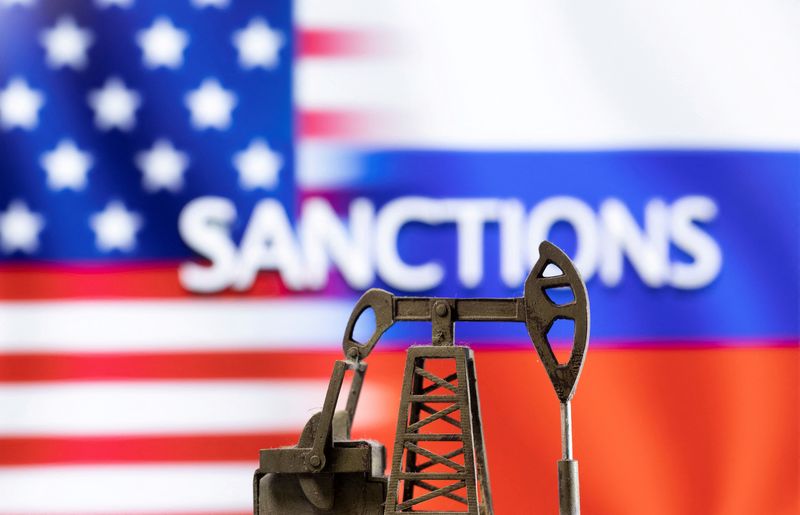Commodities
US has not asked India to cut Russian oil purchases, American official says

By Nidhi Verma and Krishn Kaushik
NEW DELHI (Reuters) – The United States has not asked India to cut Russian oil imports as the goal of sanctions and the G7-imposed $60 per barrel price cap is to have stable global oil supplies while hitting Moscow’s revenue, an American treasury official said on Thursday.
India has emerged as one of the top buyers of Russian sea-borne oil since Western nations imposed sanctions and halted purchases in response to Moscow’s invasion of Ukraine in February 2022.
“It is important to us to keep the oil supply on the market. But what we want to do is limit Putin’s profit from it,” Eric Van Nostrand, the U.S. Treasury’s assistant secretary for economic policy said in New Delhi, referring to Russian President Vladimir Putin.
Nostrand said that buyers can purchase Russian oil at deeper discounts outside of the price cap mechanism, if they do not use Western services like insurance and broking, thus limiting Moscow’s sales avenues.
“They (Russia) have to sell oil for less,” he said.
The sanctions are intended to limit the options available to Russia to three: sell its oil under the price cap, offer deeper discounts to buyers if they circumvent Western services, or shut its oil wells, Nostrand added.
The price cap imposed by the Group of Seven (G7) wealthy nations, the European Union and Australia bans the use of Western maritime services such as insurance, flagging the transportation when tankers carry Russian oil priced at or above $60 a barrel.
Anna Morris, acting assistant secretary for terror financing at the U.S. Treasury said that G7 nations had the option to review the price cap depending on market conditions or other factors.
As part of its wide-ranging sanction mechanism against Russian oil trade, the United States in February imposed sanctions on Russian state run shipper Sovcomflot (SCF)and 14 of its tankers involved in Russian oil transportation.
Morris said that SCF vessels that have been identified in the recent rounds of sanctions “certainly carry with them the sanctions risk… the 14 vessels in particular that have been named are sanctioned vessels”.
The U.S. officials are in India this week meeting with government officials and business leaders to discuss cooperation on anti-money laundering, countering the financing of terrorism, and implementation of the price cap.

Asked about the sale to Western nations of refined products produced from Russian oil, Morris said that would not breach the sanctions.
“Once Russian oil is refined, from a technical perspective it is no longer Russian oil. If it is refined in a country and then sent forward, from a sanctions perspective that is an import from the country of purchase it is not an import from Russia.”
Commodities
Oil prices rise; U.S. crude inventories plunge, Russia-Ukraine truce eyed
Commodities
India’s Reliance to stop buying Venezuelan oil over US tariffs, sources say
Commodities
Oil prices climb on Venezuela supply worries

 Forex3 years ago
Forex3 years agoForex Today: the dollar is gaining strength amid gloomy sentiment at the start of the Fed’s week

 Forex3 years ago
Forex3 years agoUnbiased review of Pocket Option broker

 Forex3 years ago
Forex3 years agoDollar to pound sterling exchange rate today: Pound plummeted to its lowest since 1985

 Forex3 years ago
Forex3 years agoHow is the Australian dollar doing today?

 Cryptocurrency3 years ago
Cryptocurrency3 years agoWhat happened in the crypto market – current events today

 World3 years ago
World3 years agoWhy are modern video games an art form?

 Commodities3 years ago
Commodities3 years agoCopper continues to fall in price on expectations of lower demand in China

 Economy3 years ago
Economy3 years agoCrude oil tankers double in price due to EU anti-Russian sanctions

























